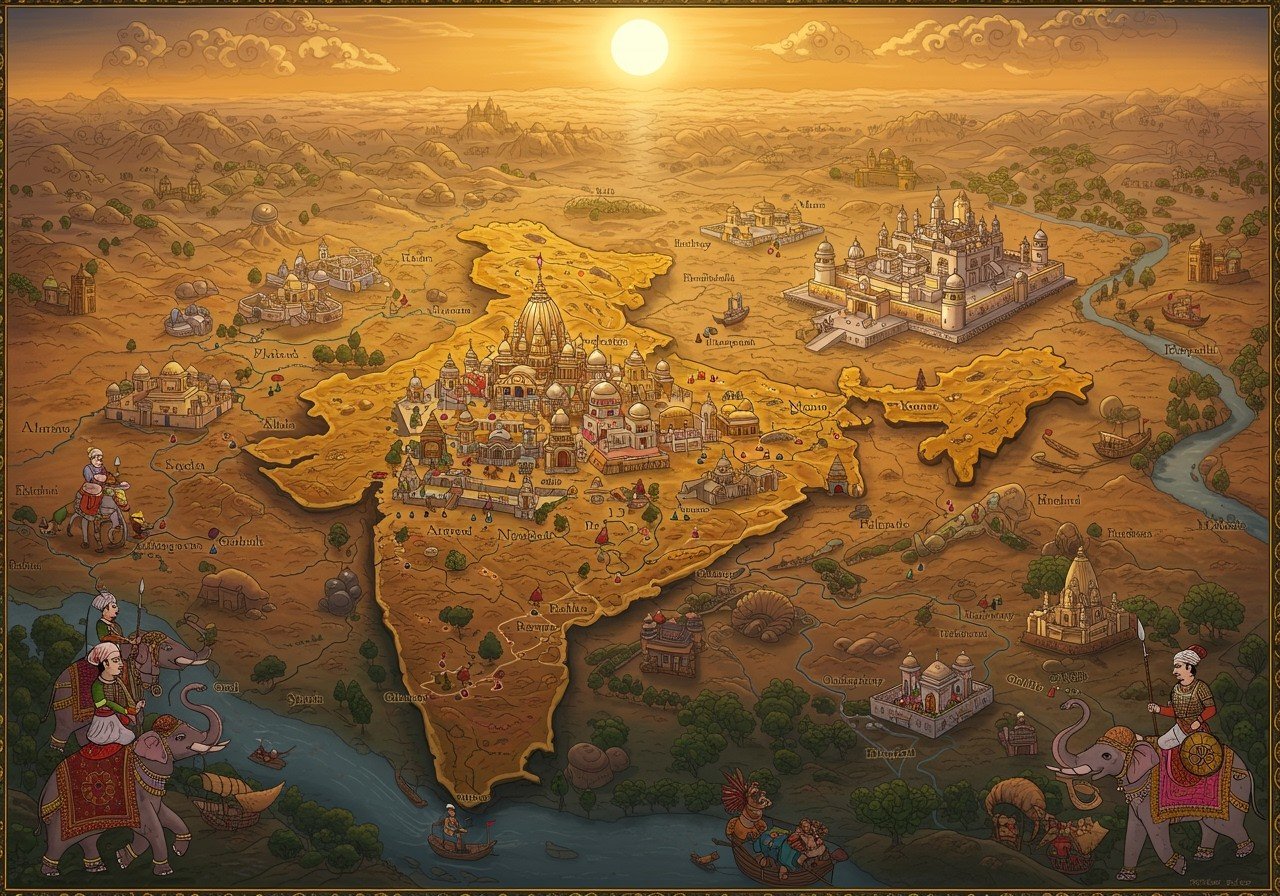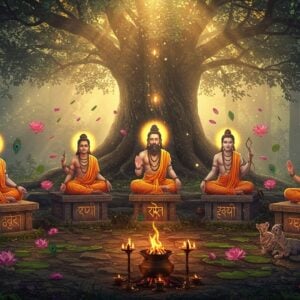
The Pratihara Dynasty, also known as the Gurjara-Pratihara, significantly shaped the political and cultural landscape of Northern India between the 8th and 11th centuries CE. This article delves into their history, geographical influence, and lasting legacy, offering a glimpse into a pivotal era in Indian history.
Origins and Rise to Prominence
Emerging from present-day Rajasthan and Gujarat, the Pratiharas, believed to be of Gurjara origin, rose to prominence under Nagabhata I around the 8th century CE. His successful defense against Arab incursions marked a turning point, establishing the Pratiharas as a formidable force in the region. This victory laid the foundation for their future expansion and dominance.
Geographical Location and Strategic Importance
The Pratihara Empire’s heartland encompassed northwestern India, including present-day Rajasthan, Gujarat, Madhya Pradesh, and parts of Uttar Pradesh and Haryana. This strategic location, influenced by the Thar Desert, the Aravalli Range, and the fertile Gangetic plains, shaped their socio-economic structure and defense strategies. The empire’s control over key trade routes and agricultural lands contributed to its prosperity.
Capital Cities and Administrative Centers
The Pratiharas established several capital cities throughout their reign. Initially, Mandore, near modern Jodhpur, served as their capital. Later, under the rule of Mihira Bhoja, Kannauj became the primary administrative and cultural hub. Kannauj’s central location and access to major river systems facilitated trade and communication, solidifying its importance within the empire.
The Zenith of the Pratihara Empire (800-950 CE)
The Pratihara Empire reached its peak between 800 and 950 CE, expanding significantly under rulers like Mihira Bhoja and Mahendrapala I. At its zenith, the empire stretched from the Sutlej River in the west to parts of the Gangetic delta in the east, and from the Himalayan foothills in the north to the Narmada River in the south. This vast territory encompassed diverse regions and cultures, showcasing the Pratiharas’ administrative prowess.
Neighboring empires, like the Rashtrakutas and Palas, constantly vied for control, making this period a dynamic era of shifting alliances and conflicts. The Pratiharas’ success against these rivals cemented their status as a major power.
Cultural and Architectural Contributions
Beyond military achievements, the Pratiharas were patrons of art, architecture, and learning. Their architectural style, evident in temples at Khajuraho and Osian, influenced later Indian architectural traditions. These temples served as centers of religious and cultural activities, showcasing intricate carvings and reflecting the dynasty’s devotion to Hindu traditions.
Decline and Enduring Legacy
From the early 10th century CE, the Pratihara Empire began to decline due to internal strife, invasions from the Rashtrakutas, and the rise of regional powers like the Chandelas and Paramaras. Despite their eventual fragmentation, the Pratiharas left an indelible mark on Indian history. Their legacy continues to resonate in the architectural marvels they created and the cultural practices they fostered.
Poojn.in: Connecting You to India’s Rich Heritage
Exploring the rich history of dynasties like the Pratiharas often inspires a deeper connection to cultural traditions. Poojn.in, India’s largest online store for cultural and religious goods, offers a wide selection of items to support your spiritual journey. Here are a few examples relevant to the historical context of the Pratihara period:
- Brass Statues and Idols: Discover beautifully crafted brass statues of deities worshipped during the Pratihara era, reminiscent of the intricate metalwork prevalent during their reign. These statues can serve as a focal point for prayer and meditation, connecting you to the spiritual practices of the past. Poojn.in offers a wide variety of sizes and styles to suit your personal preferences.
- Incense and Dhoop: Enhance your spiritual practice with traditional incense and dhoop, similar to those used in ancient temples. These aromatic offerings create a sacred atmosphere, evoking the sensory experience of historical rituals. Poojn.in provides a diverse range of fragrances, allowing you to choose those that resonate with you most deeply.
- Clay Diyas (Matir Pradeep): Illuminate your home or altar with traditional clay diyas, handcrafted using time-honored techniques. These diyas symbolize the enduring spiritual light that guided ancient kingdoms and continue to be an integral part of religious ceremonies. Poojn.in offers a variety of diya designs, allowing you to choose those that best reflect your aesthetic preferences.
Visit Poojn.in today to explore our extensive collection and enrich your connection to India’s vibrant cultural heritage.
Parshuram Temples: Goa and Kerala
Andhra Pradesh: A Journey Through Time, History, and Formation


